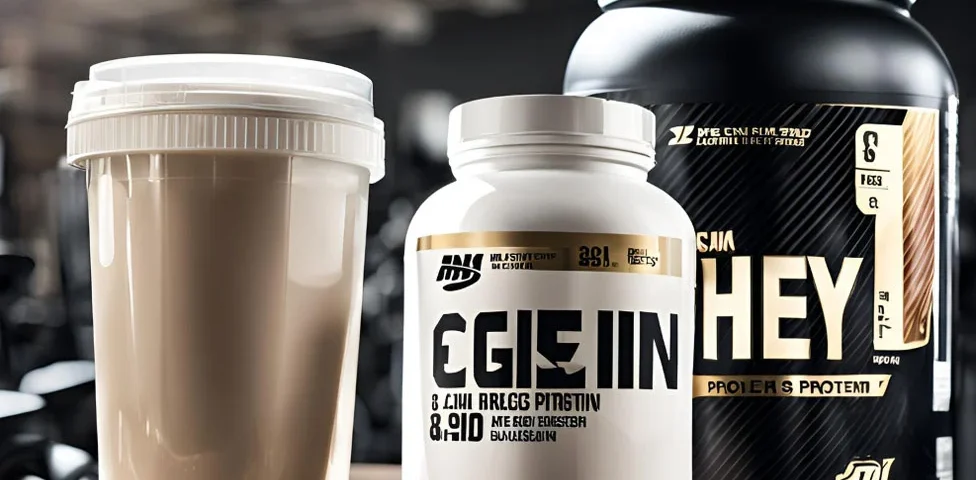
Beyond the Loaf: A Deep Dive into the Culture, Craft, and Health of Sourdough Bread
November 4, 2024
Aryarama’s Presence at the Iran Agrofood International Exhibition
May 26, 2025Proteins play a crucial role in muscle building, recovery, and overall health. Among the many protein supplements available, casein and whey proteins are the most popular, particularly among athletes, bodybuilders, and health enthusiasts. While both are derived from milk, they differ in composition, digestion rate, benefits, and usage. Understanding these differences can help you decide which protein suits your fitness or dietary goals best.
What Are Casein and Whey Proteins?
Both casein and whey are milk proteins, making up about 80% and 20% of the protein content in milk, respectively. They are byproducts of cheese production. During the cheese-making process, enzymes or acids are added to milk, causing it to separate into curds (solid) and liquid whey. The curds primarily consist of casein, while whey is found in the liquid portion. These two proteins differ significantly in their properties and how they interact with the body.
Digestion and Absorption Rate
One of the primary differences between casein and whey proteins lies in how quickly they are digested and absorbed by the body.
-
Whey Protein:
Whey is a fast-digesting protein, meaning it is absorbed rapidly, usually within 20-30 minutes. This makes it ideal for post-workout consumption when the body needs quick nutrients to repair and rebuild muscle tissue. Whey also spikes amino acid levels in the bloodstream quickly, which is crucial for muscle protein synthesis.
-
Casein Protein:
Casein, on the other hand, is a slow-digesting protein. It forms a gel-like substance in the stomach, slowing down its breakdown and providing a sustained release of amino acids over several hours (up to 7 hours). This property makes casein an excellent choice for periods of prolonged fasting, such as before bedtime, as it helps prevent muscle breakdown.
Amino Acid Profile
Both casein and whey contain all nine essential amino acids, making them complete proteins. However, their amino acid profiles vary slightly:
-
Whey Protein:
Whey is particularly rich in branched-chain amino acids (BCAAs), including leucine, isoleucine, and valine. Leucine is a key driver of muscle protein synthesis, making whey highly effective for building and repairing muscles after workouts.
-
Casein Protein:
Casein contains a higher percentage of glutamine, an amino acid beneficial for immune function and gut health. While it has BCAAs, the amount of leucine is slightly lower than in whey. However, its prolonged release of amino acids helps maintain a positive nitrogen balance for longer.
Muscle Building and Recovery
-
Whey Protein for Muscle Building:
Whey’s rapid absorption and high leucine content make it superior for stimulating muscle growth. It is often recommended immediately after workouts to take advantage of the body’s heightened anabolic state.
-
Casein Protein for Muscle Preservation:
While casein is not as effective for immediate muscle synthesis, its slow-release properties help preserve lean muscle mass. This is especially beneficial during fasting or calorie-restricted diets, as it prevents catabolism (muscle breakdown).
Satiety and Weight Management
-
Whey Protein:
Whey is more effective at curbing appetite in the short term due to its rapid absorption. It is often included in weight-loss diets as a quick, filling snack or meal replacement.
-
Casein Protein:
Casein promotes long-lasting satiety because of its slow digestion. It helps control hunger over extended periods, making it an excellent choice for those aiming to reduce calorie intake while staying full longer.
Best Times to Use Casein and Whey
-
Whey Protein:
- Post-workout for muscle recovery and growth
- Morning to replenish amino acids after an overnight fast
- As a quick protein boost between meals
-
Casein Protein:
- Before bed to sustain muscle repair overnight
- During extended periods without food, such as long meetings or travel
- For individuals following intermittent fasting
Other Nutritional Differences
-
Whey Protein:
Whey is lower in calories and fat compared to casein. It is often preferred by those looking to reduce overall calorie intake or build lean muscle mass.
-
Casein Protein:
Casein has a slightly higher fat and calorie content but is richer in calcium, which is essential for bone health. Its creamy texture also makes it a favorite for protein puddings and smoothies.
Which Protein Should You Choose?
The choice between casein and whey depends on your specific fitness goals, dietary needs, and lifestyle:
-
Choose Whey Protein If:
- You need a quick post-workout recovery protein
- You aim to build muscle rapidly
- You prefer a light, easily digestible supplement
-
Choose Casein Protein If:
- You want a sustained release of nutrients, especially overnight
- You need a protein to control hunger for longer periods
- You are looking for a supplement that supports muscle preservation during fasting
Can You Use Both?
Yes! Many fitness enthusiasts and athletes use both casein and whey to maximize their benefits. For example, you can consume whey after your workout for immediate muscle recovery and casein before bed to support overnight muscle repair.
Conclusion
While casein and whey proteins share similarities, their differences in digestion, absorption, and amino acid profiles make them unique. Whey is your go-to for quick recovery and muscle building, while casein is ideal for prolonged satiety and muscle preservation. Incorporating both into your diet strategically can help you achieve a well-rounded approach to fitness and nutrition.



